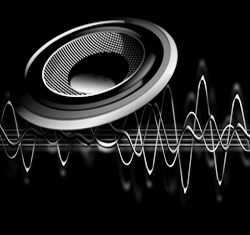
Correction By Inverting Polarity
The first thing I would try to troubleshoot this is to invert the polarity of one of the tracks and see if that’s better or worse.
I know this because there is a time delay with these tracks that inverting alone won’t fix everything.
I can invert the polarity in two different ways, I can either use an offline process and invert the whole wav file or I can insert a plug-in on the track.
Some DAWs have a polarity reverse button on each channel of the mixer that will do the same thing.
I’m just going to play the tracks and invert the polarity a few times so you can hear the difference: LISTEN
Correction By Time Adjustment
I’m going to keep it the way it was and then go to the next strategy. That is moving the tracks around in time. The microphone track is delayed compared to the DI track just slightly. So I can either nudge the microphone track earlier or delay the DI track a little.
I’m going to delay the DI track just slightly. To do this I’m going to insert a delay plug-in that works in samples, such as the Time Adjuster plug-in in Pro Tools.
I’m going to invert the phase, then scroll through the delay value 1 sample at a time until I achieve the most cancellation, then switch the phase back to normal. I found that 152 Samples did the trick. You can also zoom in really close on your waveforms and nudge a track until it lines up. LISTEN
Processing Delay
Another common cause of phase cancellation is when doing parallel processing with delay causing effects or external gear. If the delay is long enough you will hear it as a discrete echo, if it’s short then you will get the comb filtering problem.
The way to get around this is to delay all the other tracks by the same amount so they all reach the master bus at the same time.
Multiple Mics On A Single Source
When using two mics on a speaker cabinet you need to be aware of the phase relationship. You can never get the mics to perfectly cancel out, but you find a place where the two mics work together really well.
Start by positioning the first mic in any way you like. Put on headphones and start moving the second mic around, you’ll hear all kinds of phase cancellation but there will be at least one placement that sounds really good.
It helps to invert the polarity of the second mic while doing the listening in headphones find the place where you get the most cancellation then flip the polarity again for a nice big sound.
Phase Issues With A Single Mic?
Believe it or not, you can also get phase issues when using just a single mic. Reflected sound from nearby surfaces like the floor or walls can get into your mics and cause partial phase cancellation.
There is only one way to deal with this, and that is at the source. Put down carpet, sound damping materials, lift the amp off the floor whatever you have to do to get rid of the problem reflections.
This is one of the only things you can’t fix after it’s recorded. Never time adjust when using multiple microphones, especially for things like drum mics, get it right with your mic placement.
Wow, this article got really long, congrats if you followed along to the end. It was exhausting preparing this article and I feel like I’ve only covered about half of what I should. I didn’t talk about drum miking, stereo, M/S or tricks using phase. I hope it’s a helpful guide
Jon Tidey is a Producer/Engineer who runs his own studio, EPIC Sounds, and enjoys writing about audio on his Audio Geek Zine blog—check it our here.
